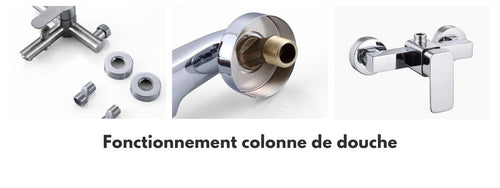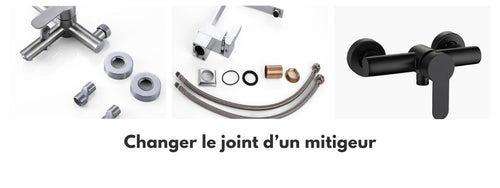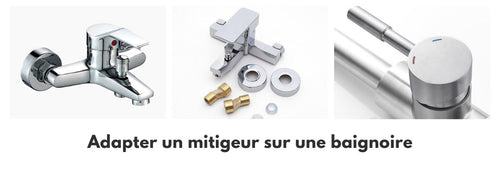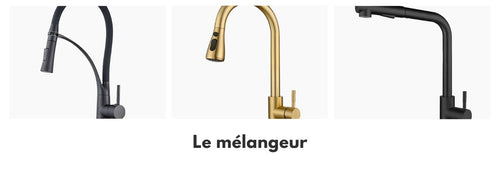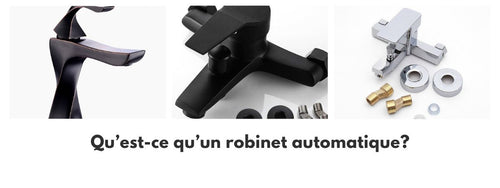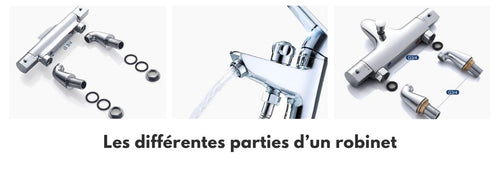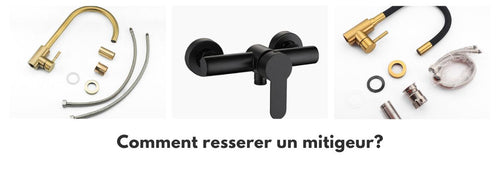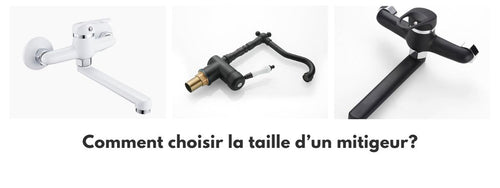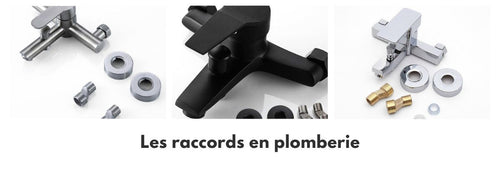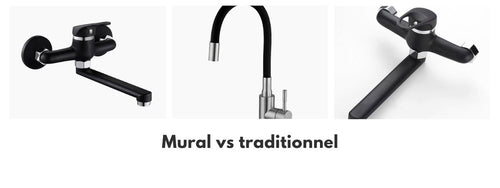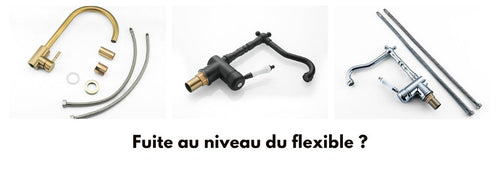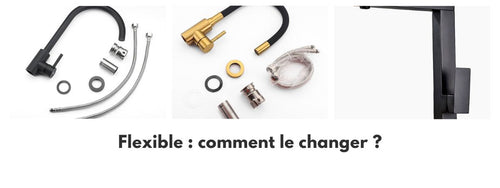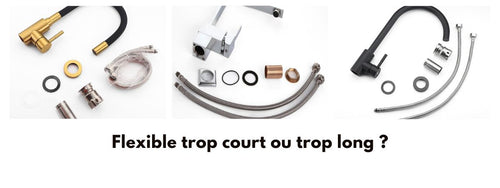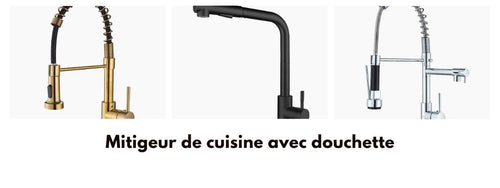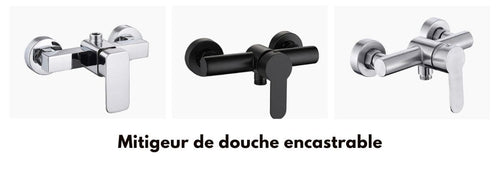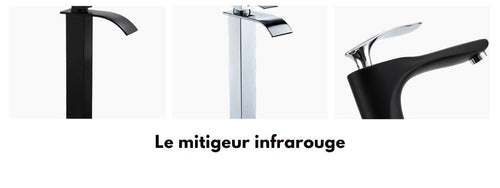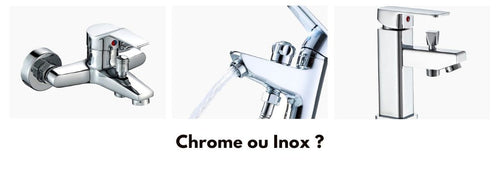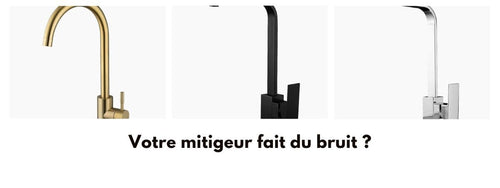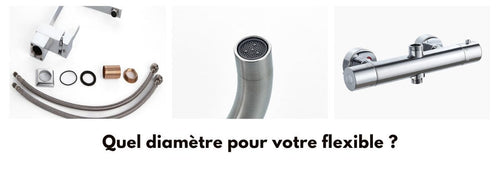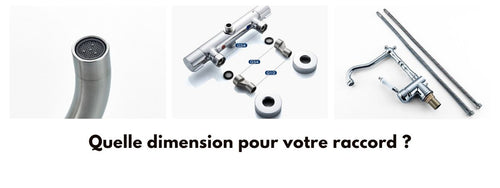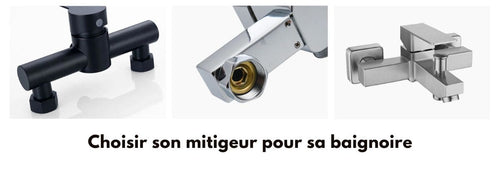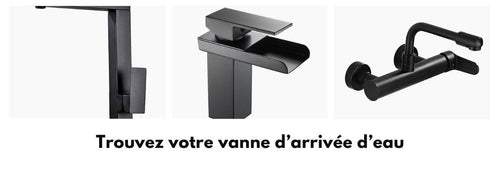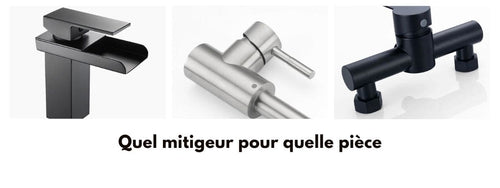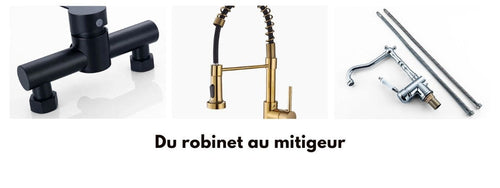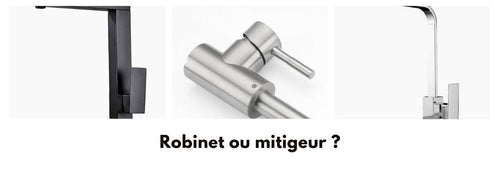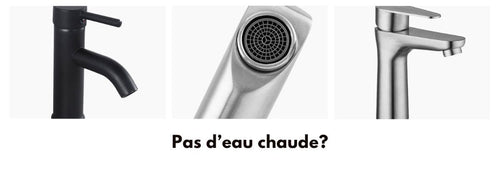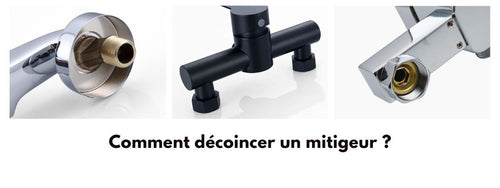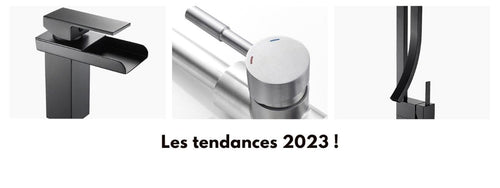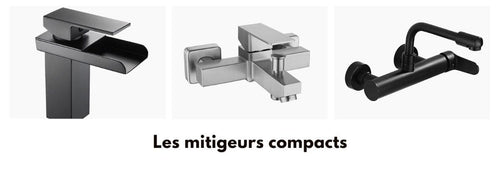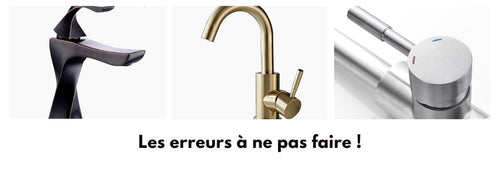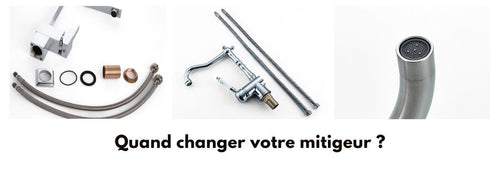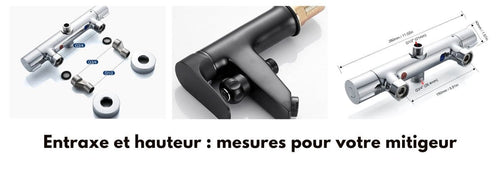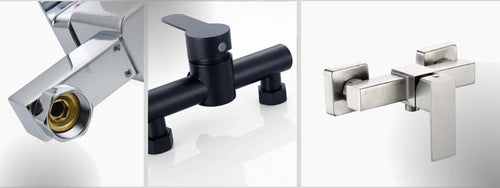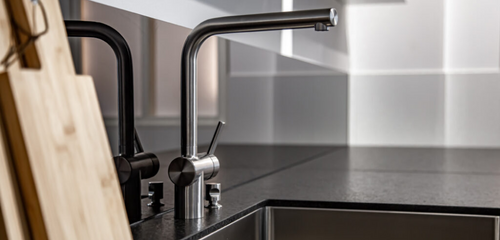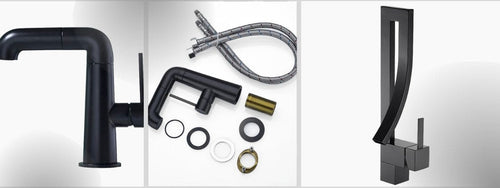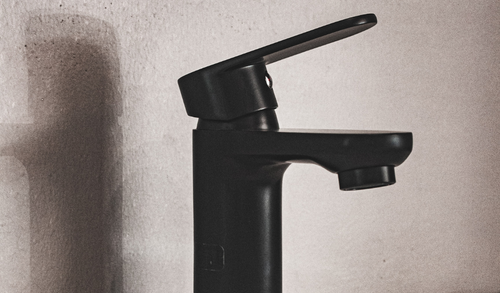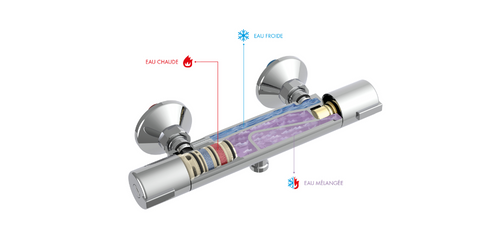Changing the faucet in your kitchen is an economical way to improve the convenience and functionality of your kitchen. Depending on the number of pipes and the style of your kitchen sink, the process varies but remains fairly simple. This guide will show you how to remove the old faucet or install the new kitchen faucet. Read on to discover step-by-step how to install a kitchen faucet.
Why change a kitchen faucet?
There are several reasons to replace your kitchen faucet. The main reason is a leaking faucet or a drip problem that won't stop. When even after changing the gasket, the leak does not stop, replacing the faucet is the only solution. If your faucet is corroded by limescale, you can also replace it with a kitchen mixer faucet with a pull-out spray to better integrate it into the decor of your new kitchen.
It is common for people to have a defective kitchen faucet before replacing it. On the other hand, buying a new faucet should not always be a hasty decision. Whether your kitchen faucet is outdated, impractical, or you have discovered a leak, you will have no trouble finding a faucet that suits your needs.
When it comes to kitchen faucets, mixers are currently in vogue. They offer the ability to control the temperature and flow of water with a simple press. As for the design, there is always a model that will suit you and meet your needs. Whether you want a mixer with a pull-out spray, a wall-mounted mixer, or a foldable mixer, you will be served.
How to choose the right kitchen mixer?
There are several types of mixers. You have the choice between a kitchen faucet with a pull-out spray which is practical, functional, and aesthetic, or a foldable kitchen mixer. There are therefore a few elements to consider when choosing the right mixer for your kitchen.
The height
Not having the right height with your kitchen faucet can be annoying. It will be too short for large pots to fit underneath. You will have a hard time filling them, and washing them will be a real chore. A higher kitchen faucet gives you more space for these larger items. By opting for a foldable mixer faucet, you can enjoy a tall and elegant faucet, no matter the layout of your kitchen.
If you have a window next to your sink, a foldable mixer faucet under the window is ideal to allow you to ventilate your kitchen with ease. The water-saving aerator regulates and stabilizes the outgoing flow to allow you to reduce your water consumption.
The finish
Take into account the finish of the rest of the room when choosing the finish of your new faucet. Look at the handles of the cabinet doors and drawers and choose a color that complements them. You can also think about how the finish of the faucet will resist water stains and fingerprints.
Some faucets are equipped with a stain-resistant coating, so the faucet stays clean longer! At Le-Mitigeur.com, we offer several finishes. You can choose a chrome finish, black, white, gold, or stainless steel.
Similarly, before choosing, check the mounting method of your old faucet and its dimensions in order to choose the right model.
The model
Now that you know the type of faucet you want, you need to identify the model that will fit your sink. To do this, simply look at your old system and take measurements. First, check the number of holes drilled on the edge of your sink to install the old faucet. Generally, there are between 1 and 3. Opt for faucets with the same number of holes.
However, if you plan to install a completely different faucet, you will need to drill a new hole in your sink. This is the surface where the faucet is installed. In another case, you will need to replace your sink with another compatible with your new faucet.
Finally, do not forget to check the condition of your pipes and joints. If their effectiveness has decreased or if they are damaged, you should consider changing them at the same time as your faucet.
How to remove the old kitchen faucet?
Before installing your new kitchen mixer faucet, you must first remove the old faucet. To do this, follow the following steps.
Prepare the material to change the kitchen faucet
You will need an open-end wrench and an adjustable wrench to change your kitchen faucet. In case there is a water leak, it is best to have a cloth on hand to soak it up.
Clean under the sink
You will spend some time lying on your back inside the sink cabinet, so start by emptying everything in it. Take the opportunity to get rid of many cleaning products that you have duplicates of or don't really need. Then place an old towel at the bottom of the cabinet so you don't have any chemical residues while you work.
Turn off the water and disconnect the hose
You must start by turning off the water supply. There should be two pipes for hot and cold water with shut-off valves on the front or top. The right pipe is usually for cold water and the left pipe is for hot water. Detach the water supply hoses from the faucet using an adjustable wrench. The hoses can be flexible or rigid. Turn the screws clockwise until they are closed and the water stops flowing.
After turning off the water, remove the hose that leads to the faucet. Make sure you have a bucket on hand to collect any remaining water in the pipes that would flow when you dismantle the faucet.
Loosen the nut under the sink
Look under the sink, where the faucet is attached. There should be a nut that holds a U-shaped bracket against the sink. Before trying to remove it, first apply a little oil. This will help you loosen the nut, and you won't have to struggle for hours. To unscrew the nut, you can use an adjustable wrench.
Disassemble the old kitchen faucet and clean the sink holes
After loosening the nut, you can unscrew it manually and remove the washer and the mounting plate. The important part of the faucet change in the kitchen is to remove the old one. Locate the faucet connections under the sink. The old faucet is connected to two water supplies by pipes. Use a wrench to unscrew the bolts of the supply pipes. The remaining water in the pipes should drain.
Now, when the faucet is no longer held by the mounting nut, remove it by pulling it up. Be prepared to be disgusted by the dirt underneath. Don't worry, because it's a gasket that has disintegrated or limescale has accumulated at the faucet level. After removing the faucet, carefully clean the sink hole. Once the sink holes are cleaned, it's time to install the new kitchen faucet.
What are the steps to install the new kitchen faucet?
After removing the old faucet, installing the new one should no longer be complicated. A pair of adjustable pliers can also be useful if you don't have a wrench.
Prepare for installation
Before undertaking the operation of replacing your kitchen faucet, there are a few points you need to check. First, make sure that the base of the new faucet is wide enough to cover the perforated hole. Also, make sure of the height of your faucet and make sure that the new faucet does not prevent you from opening a window, for example. The length of the hot and cold water hoses supplied with the faucet must be appropriate to be connected to the hot and cold water inlets of the faucet.
Install the mounting plate (optional)
There are faucets that work with a single-hole or three-hole kitchen sink. The included mounting plate covers the additional holes. This piece is not necessary if you have a single-hole sink.
Secure the new faucet
Most of the time, disassembled faucets are delivered with an instruction manual. Be sure to follow the instructions scrupulously, as the assembly process may not be the same for all kitchen mixers.
After mounting the faucet, place the sealing ring at the base of the faucet and insert the hoses into the sink hole. Then place the lower seal of the faucet under the sink and connect it until you get a connection between the hole and the faucet. Place the washer on top while making sure that the faucet is in the right direction. Now screw the nut with an adjustable wrench.
After securing the faucet, simply connect it to the water supply hoses. To do this, screw the faucet hoses onto the male-female connections of the pipes, first making sure that the connections have gaskets. An adjustable wrench and an open-end wrench can help you do this.
It is important to ensure that the hose for cold water is connected to the cold water pipe and that the hose for hot water is connected to the hot water pipe. Generally, the cold water supply is on the right side of the faucet if you are facing it.
Turn on the water and check for leaks
After installing the faucet, it's time to turn the water back on. Open the faucet and let it run for about a minute to check for leaks. Take the time to check for leaks in the piping and joints.
In case of a leak, turn off the water supply again and make the necessary adjustments by tightening a little more. Check again several times over the next 48 hours to ensure that everything is working properly. If everything is dry, you are done!
As you can see, it is not difficult to replace a kitchen faucet yourself! With the money you will save by not hiring a professional, you can buy a beautiful gold, black, or stainless steel swan-neck foldable kitchen mixer faucet at Le-Mitigeur.com.
Should you hire a plumber to install a new faucet?
You have the option of replacing a faucet yourself without hiring a plumber. It should take you less than an hour with a few basic tools, such as an adjustable wrench and an open-end wrench. The same techniques apply to kitchen and bathroom faucets. If you enjoy DIY, you should be able to remove the old faucet and install a new one for yourself.
If you really don't feel comfortable doing these jobs, then you can hire a plumber. If additional plumbing work needs to be done, plan to spend more on parts and labor.
Furthermore, if your kitchen is equipped with a wall-mounted faucet, replacing and installing a new faucet can be a bit difficult and require the intervention of a plumber. When installing a wall-mounted faucet, people tend to confuse the hot and cold water supply lines, which can damage the installation.
How often should a kitchen faucet be replaced?
In general, kitchen faucets are supposed to last between 15 and 20 years. However, this is not always the case, especially when the faucet is made from lower-quality materials. Although faucets are available at a cheap price, it is recommended to buy a good quality faucet at Le-Mitigeur.com so that it lasts a long time.
Aside from that, we recommend keeping an eye on your current kitchen faucet to detect problems as early as possible. If you have to repair it frequently, it is best to replace it with a new faucet to save on repair costs.
Faucets can also be damaged due to incorrect use and poor water quality. If you suspect such plumbing problems, have your kitchen faucet checked by a plumber.
Conclusion
You are now ready to replace a kitchen faucet on your own without needing much help. If this is your first time installing a kitchen faucet, it may take you some time to master all the steps. However, don't give up, as you will eventually understand the process after going through the steps several times:
- Open the faucet to drain the water from the pipes and faucet
- Unscrew the hose connections on the hot and cold water inlets of the faucet
- Unscrew the bolts holding the faucet to the sink
- Disassemble the faucet
- Clean the area around the faucet perforation on the sink
- Manually screw the supply hoses into the bottom of your new faucet
- Screw the threaded rod that holds the faucet to the sink. It is common for the faucet to be held by two threaded rods or a brass ring that holds the faucet in place
- Install the O-ring on the part of the faucet that seals the faucet seat to the sink
- Insert the hoses into the perforated part and secure the new faucet in place
- Put the bolt back on the rod and tighten to secure the faucet to the sink
- Make sure that the faucet connections do not leak



